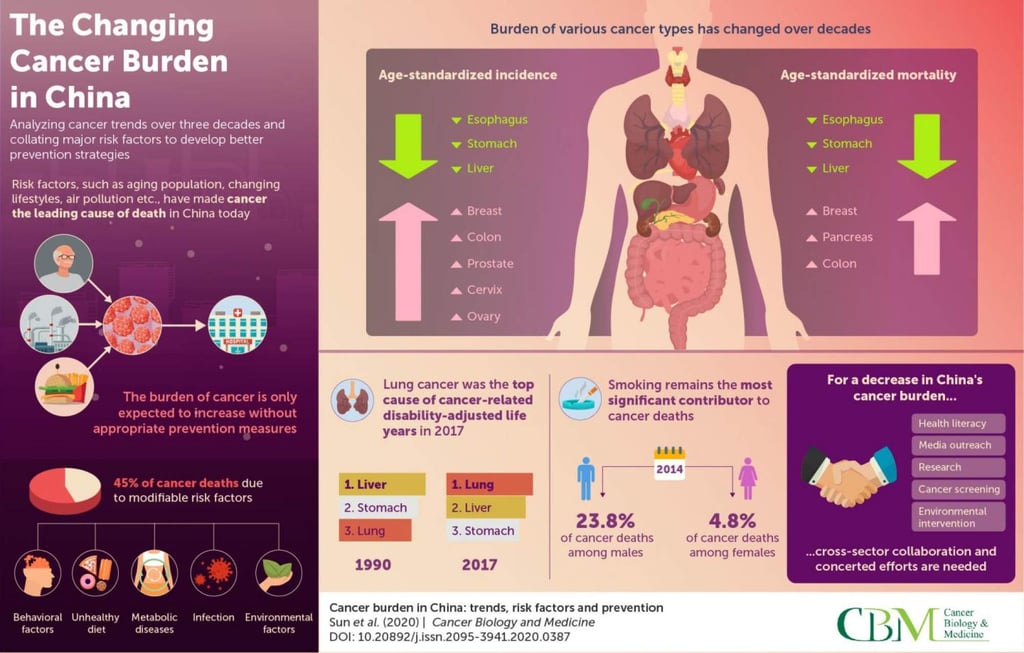Breast, colorectal and prostate cancers on the rise in China; liver, stomach cancer among those falling, new research finds
- A review of cancer trends from 1990 to 2017 found that while there had been an increase in a number of cancers in China, others had significantly reduced
- Despite the massive progress China has made in health care since the 1950s, cancer has become the leading killer in the country

Like the rest of the world, cancer is a leading cause of death in China. But thanks to new research, it is hoped this will change over time as people are made more aware of the dangers.
This week, researchers in the country called on government and public health bodies to “reduce the cancer burden” in the wake of an extensive review by the National Cancer Centre that found many cases of the illness – and related deaths – in the past 30 years could have been prevented.
The team, from the Chinese Academy of Medical Sciences and the Peking Union Medical College, reviewed cancer trends from 1990 to 2017 across 22 Chinese registries by analysing national mortality surveys, cancer registries and online databases. The findings were published in Cancer Biology & Medicine.
By collating trends on incidence, mortality and risk factors for cancer, the researchers say they hope to inform policies, create awareness and reduce the morbid statistics.

“This review could provide scientists and policymakers with a tool to find what works, what matters and what is expected,” says lead researcher Dr Wanqing Chen.
The review found increases in incidences of colorectal, prostate, breast, cervical and ovarian cancers but significant reductions in liver, oesophageal and stomach cancers. This was mirrored by the cancer mortality data from 1990 to 2015, which saw more people dying from cases of colorectal, pancreatic and breast cancers but falling rates in stomach, oesophageal and liver cancers.